Heritage at Risk register 2021: Yorkshire Dales farm and crumbling Whitby mansion added to list - but restored First White Cloth Hall and Plumpton Rocks removed
Yet 2021 has also seen 17 sites removed from the list as they are considered to have been restored and 'saved' for future generations - including the First White Cloth Hall in Leeds and Plumpton Rocks, an historic pleasure garden near Harrogate. The remains of a World War Two anti-aircraft battery on a farm near Beverley have also been taken off the register after a new tenant farmer cleared the site and began running tours of it.
The four sites of new concern to Historic England include two Georgian properties on an elegant Regency terrace in Whitby and a centuries-old hill farm in Swaledale which was only rediscovered in 2018 having been abandoned for decades.
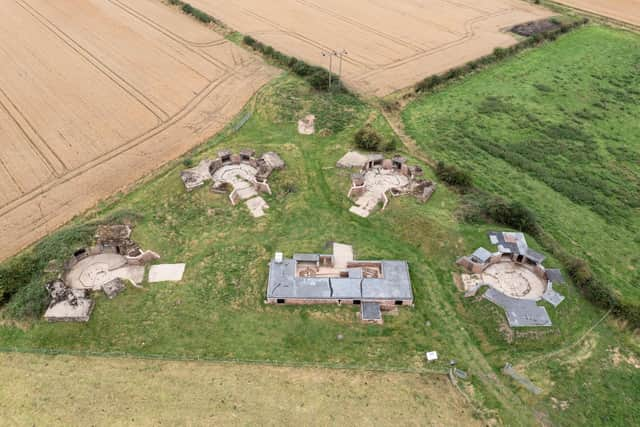

Advertisement
Hide AdAdvertisement
Hide AdAdditions to the register are listed or protected buildings and monuments whose future is uncertain due to reasons such as structural disrepair, ownership disputes, a lack of financial viability or inappropriate development.
Entries are removed mainly following major restoration projects or instances where a building has been repurposed, converted for a new use or given special legal protection from disturbance.
Historic England's Yorkshire regional director Trevor Mitchell said:“Our heritage is an anchor for us all in testing times. It provides beautiful places that make us feel good. This year’s Register shows that looking after our historic places can contribute to the country’s economic and social recovery as well as bring communities together to enjoy their surroundings.
“The 17 sites saved this year in Yorkshire show what’s possible with strong partnerships investing together to secure public benefits. Agencies such as Natural England, the National Lottery Heritage Fund and Historic England recognise the importance that historic places have for their local communities. Whether it’s an overgrown pleasure ground, an abandoned anti-aircraft site, or the forgotten cradle of Leeds’ trading power, it’s clear that restoring our heritage improves people’s lives.”
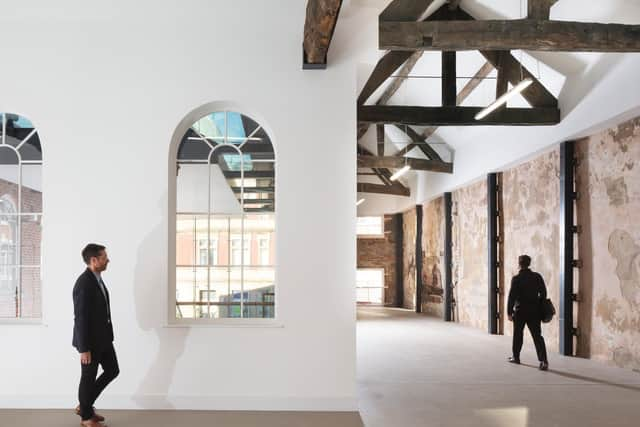

Saved - Plumpton Rocks, Harrogate
Advertisement
Hide AdAdvertisement
Hide AdPlumpton Rocks is a Grade II*-listed landscape designed in the mid-18th century, one of a collection of historic gardens across North Yorkshire. The site’s condition had declined largely due to silting of the lake and the growth of self-set trees. But a long-running project with vital support and funding from Natural England’s Countryside Stewardship scheme, Historic England, the Historic Houses Foundation and the owner has seen the grounds restored. The lake has been dredged to recover its 18th century proportions, there have been repairs to the dam and work to manage trees and vegetation growth, as well restoration work to the remaining parkland.
Plans are being developed to manage public access and already the local angling club are helping to control invasive vegetation. The site features a man-made lake and dam, wood and parkland, with dramatic natural outcrops of millstone grit rock formations, shaped and eroded by wind and water. It was twice painted by JMW Turner, with both works now hanging in Harewood House.
The site has a rich history: the Plumpton family owned the estate from the Norman Conquest, until it was sold to the Lascelles family of Harewood House in the 18th century. In the 1950s, descendants of the original Plumpton owners bought it back.
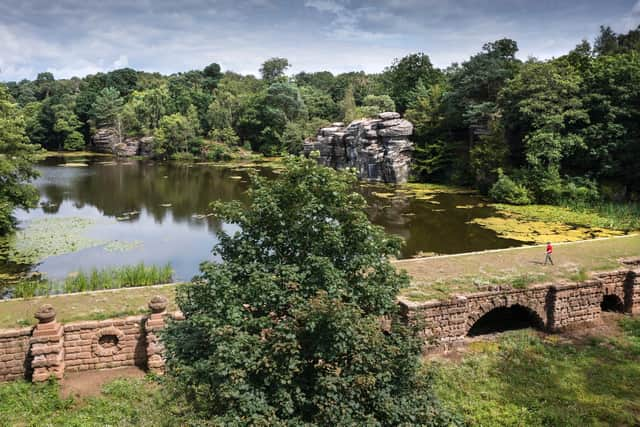

King George V and Queen Mary visited the gardens privately after their daughter, Princess Mary, married the Earl of Harewood in the 1920s and raised her sons at first Goldsborough Hall near Knaresborough and then Harewood House itself.
Advertisement
Hide AdAdvertisement
Hide AdThe site was first added to the Heritage at Risk register in 2012. Owner Robert de Plumpton Hunter said the gardens had initially entered decline after World War One when there was a shortage of manpower to maintain them, and tourism 'trends' then began to change. Some grant funding since awarded allowed them to open to the public for a limited time before the current work began. In 2016, an adaptation of Swallows and Amazons was filmed on the lake.
Saved - First White Cloth Hall, Leeds
Yorkshire property developers Rushbond specialise in revitalising historic buildings and the First White Cloth Hall on Kirkgate in Leeds city centre has become one of their flagship projects.
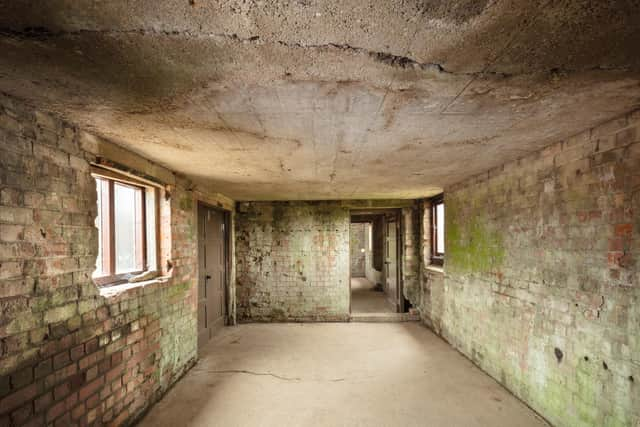

It was built in 1711 for the sale of undyed cloth, a role successively taken on by the second, third and fourth White Cloth Halls. Today only the first and third survive. The hall represents the beginnings of the city’s wealth from the wool trade. It was originally built to dissuade traders from moving away to a new covered cloth hall in Wakefield. Over the years the building was used for many purposes, but by the 1980s it was largely vacant.
Completely disused by 2010, it fell into very poor condition. Today, thanks to the passion of the Leeds Civic Trust which argued for its preservation, and a regeneration project led by Rushbond, in partnership with Historic England, the National Lottery Heritage Fund and Leeds City Council, a new commercial or leisure tenant is being sought for the Grade II*-listed building . Extensive restoration was necessary and the rediscovered central yard has been glazed over. There were also many fascinating centuries-old finds made during the building work.
Saved - Butt Farm anti-aircraft battery, near Beverley
Advertisement
Hide AdAdvertisement
Hide AdFirst operational in 1941, the battery was built to defend Hull from aerial attacks during World War Two - though the effectiveness of such installations has since been disputed.
The H31 or Walkington gun battery, now a scheduled monument, is located on a farm and campsite. The emplacements are built from brick and arranged in an arc around a semi-submerged command post. The 3.7-inch guns were operated by men of the 62 HAA Regiment, with women of the Auxiliary Territorial Service carrying out all other roles on the site including operating radar and communications systems; some 300 personnel in total.
The site was last used in the 1950s, after which it was abandoned, fell into disrepair and became overgrown with brambles and nettles. New tenants took over the farm in 2015 and they worked hard to clear vegetation, enlisting volunteer support from a local Scout group. More recently, Albanwise Environment, acting as managing agent on behalf of the landlord, partnered with Historic England on a programme of repair including replacing decayed bricks, repointing and roof repairs. The works have seen interest in the site flourish. The public can now see the battery on one of the weekly guided tours run by local military historian Dennis Chapman, who also arranges visits for military enthusiasts, history and walking groups, and most recently 130 people as part of Heritage Open Days. The site is on private land, accessible for tours by prior arrangement with Butt Farm.
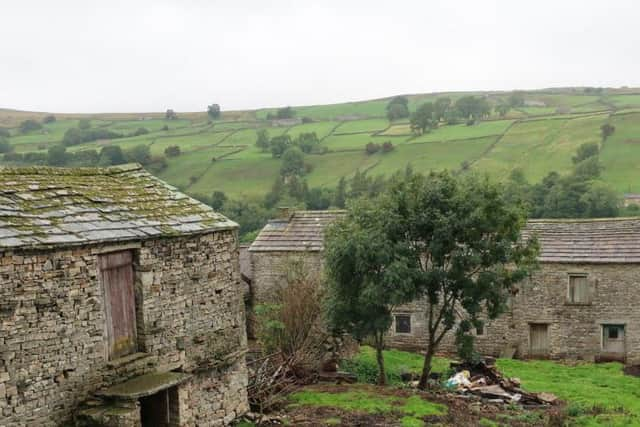

Saved - Howardian Hills Monument Management Scheme
As a result of the scheme, 16 scheduled monuments have been removed from the register and six have seen their condition improve.
Advertisement
Hide AdAdvertisement
Hide AdThe Howardian Hills Area of Outstanding Natural Beauty is a landscape shaped over the centuries by the owners of several large country houses; Castle Howard, Hovingham Hall, Newburgh Priory, Gilling Castle and Nunnington Hall. The AONB covers 79 square miles of countryside, farmland and parkland, which contain many archaeological features including Iron Age earthworks.
Maintaining these features is important as they tell the story of this land’s human occupation over thousands of years. Since the start of the monument management scheme in 2015, volunteers have worked with the AONB team to care for vulnerable monuments and learn the skills necessary to manage them. As a result of the scheme, 16 scheduled monuments have been removed from the register, six have seen their condition improve, and work to a further 20 has prevented decline. Volunteers were key to the success of this scheme, assisting with surveys and inspections as well as clearing invasive plants to allow native species to flourish, relishing the chance to be active outdoors and help care for this precious landscape.
Added - Low Whita Farm, Grinton, Yorkshire Dales
Low Whita in remote Upper Swaledale was only rediscovered in 2018 by Yorkshire Dales National Park Authority conservation officers who conducted a site visit after receiving a planning application to convert it into a home. They were so astounded by its heritage value that they successfully applied to have it listed, meaning it cannot now be demolished or significantly altered - yet without a new use, its future remains uncertain.
The abandoned farmstead near Low Row is a relic of a vanished way of life. According to the National Park Authority's building conservation officer Peter Reynolds, it 'encapsulates centuries of history and tradition in Swaledale like no other site'.
Advertisement
Hide AdAdvertisement
Hide AdThe protected buildings include three houses, a barn, butter factory and several outbuildings, some of which were once thatched before slate roofs were added.
The name of Low Whita is 350 years old and there is evidence that it was farmed by the Close family in 1649. Their descendants lived there until the 19th century.
Peter first became aware of Low Whita in late 2018, when he was asked for his opinion on a planning application to bring the site back into residential use. The farm was abandoned in the early 20th century, when the market for home-made cheese and butter collapsed
The three modest houses and a smaller cottage are all of pre-1700 origin, and were originally thatched with local heather. The barn is detached from the main houses and there is also a Victorian butter factory
Advertisement
Hide AdAdvertisement
Hide AdThere is even 17th-century graffiti still visible on the walls, as well as the Close name carved into a mantle above an old fireplace and 'witch marks', which were etched to ward off evil spirits.
William Batty and his sister Elizabeth moved from Whitby in the mid-1800s to take over Low Whita as a buttery, and in the 1920s cheeses made at Low Whita were still being entered into the Muker Show.
It's thought that the dairy closed before World War Two and the site was gradually abandoned, with its use being reduced and four households being amalgamated into one. The last part to be occupied was a rented farmer's cottage.
Although these sort of smallholdings would once have been common in the Dales, Low Whita is one of the few surviving examples from the period.
Advertisement
Hide AdAdvertisement
Hide AdAlthough planning consent was granted with conditions for residential use back in 2019, the then-owner Ashton Peel, Viscount Clanfield and heir to the Peel earldom whose family seat is at Elmire House near Ripon, sold it the same year. It is not known who the current owners are.
Added - 15 and 16 St Hilda's Terrace, Whitby
St Hilda's is a Regency terrace built during Whitby's early years as a seaside resort for the gentry. Several of the large Georgian properties remain as private homes or have been converted into guesthouses or holiday lets - including a former ship's captain's residence - but 15 and 16 have fallen into decay.
Famous past residents of the street include geologist and founder of Whitby Botanic Gardens, the Reverend George Young, who lived there until 1848, and Vice-Admiral Sir William Clarkson, the founder of the Royal Australian Navy, who was born on the terrace in 1859.
The terrace was listed in 1954.
Whitby Civic Society has raised concerns with Scarborough Council about the condition of 15/16, and member Janet Kukk has researched their histories.
Advertisement
Hide AdAdvertisement
Hide AdThe entire terrace was built on land inherited by Thomas Hayes, who sold off the other plots but kept one for himself, where 15/16 was built, originally as one property. It was divided into two by 1797. Number 15 was sold to the Middleton family, who were prominent in Whitby life, and 16 was rented by an army major.
Various Middleton men inherited the property until it finally changed ownership in 1901 - after over 100 years of occupation by one family.
The 1901 census shows that the property was occupied by a Captain John Foster and his family; he died in 1911 and in 1912 the house was advertised to let. With the publication of the 1921 census next year, researchers hope to find out more about the next residents.
Society chair John Field said he had decided to recommend the houses for inclusion on Heritage at Risk after becoming concerned about vermin infestations and general neglect.
The other sites removed from the list
Henry Simpson's Barn, Appletreewick, Craven
Butterton Bridge, Sawley/Warsill
Round barrow in the west of Scarrish Wood, Barton-le-Street
Advertisement
Hide AdAdvertisement
Hide AdAlum quarries and works 800m north of Sandsend Bridge, Lythe, Scarborough
Round barrow 545m NNW of Wool Knoll, Hovingham
Two round barrows 600m NNE of the north east corner of North Ings Plantation, Commondale, Scarborough
Round barrow 170m north of Wool Knoll, Hovingham
Alum works at Kettleness, Lythe, Scarborough
Site S of Maiden's Grave Farm, Burton Fleming
Cross dyke 600m north west of Easthorpe Farm, Appleton-le-Street with Easthorpe
Wesleyan Chapel and Hall, The Green, Slingsby
Round barrow 350m south west of Moor House Farm, Hovingham
Section of the Cleave Dyke system 200m south east of Yorkshire Gliding Club, Kilburn High and Low, Hambleton
Cockan Cross wayside cross 600m west of Fox Hole Crag, Bransdale, Ryedale
Comment Guidelines
National World encourages reader discussion on our stories. User feedback, insights and back-and-forth exchanges add a rich layer of context to reporting. Please review our Community Guidelines before commenting.
